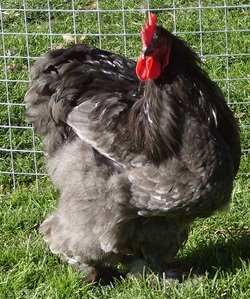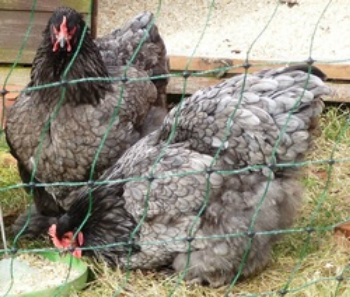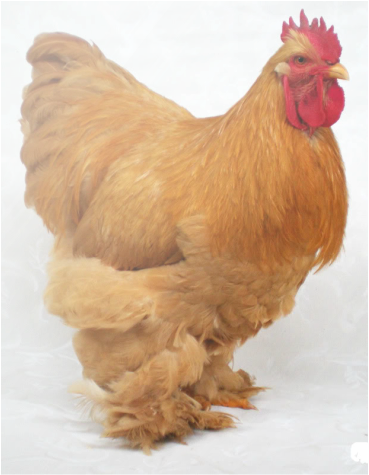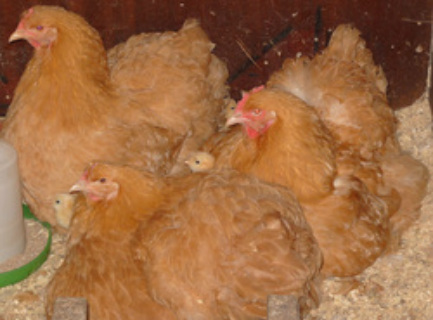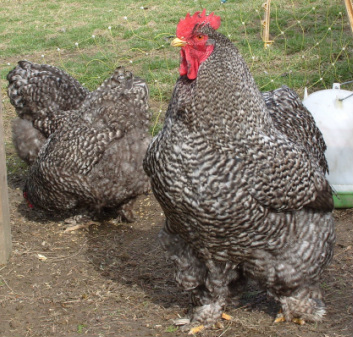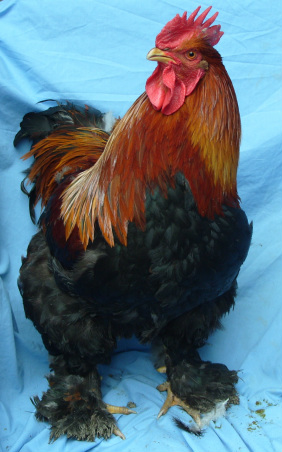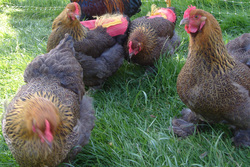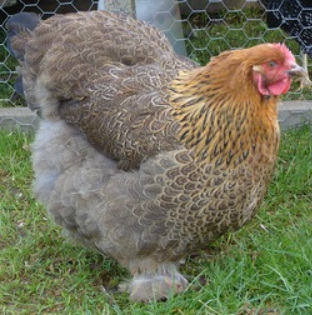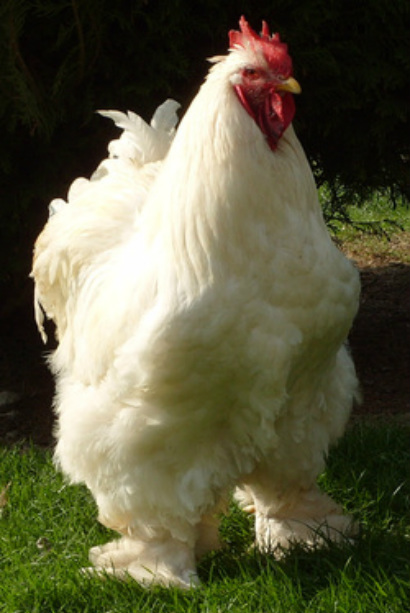Standard Cochin Colours
A standardised colour, is a feather pattern that has been agreed by the breed club in conjunction with the Poultry Club of Great Britain (PCGB) A set type and range of acceptable shades of that particular feather pattern/colour that have been layed down, and a range of judging scoring points set out as a guide for Judges to judge to and breeders to try to achieve as best they can.
I will add notes on how colours should be best kept and achieved from Lewis Wright, who initially set out standard for each colour still stands, even in the latest 6th Edition of the British Poultry Standards. Then my own ideas and views of the genetic make up of each colour. A working knowledge of this is very advantageous when breeding and trying to improve lines of colours and breeds. Cochin lovers will find this sort of information and useful tips, very very hard to come by, as I have over the years
I will add notes on how colours should be best kept and achieved from Lewis Wright, who initially set out standard for each colour still stands, even in the latest 6th Edition of the British Poultry Standards. Then my own ideas and views of the genetic make up of each colour. A working knowledge of this is very advantageous when breeding and trying to improve lines of colours and breeds. Cochin lovers will find this sort of information and useful tips, very very hard to come by, as I have over the years
BLACK COCHIN
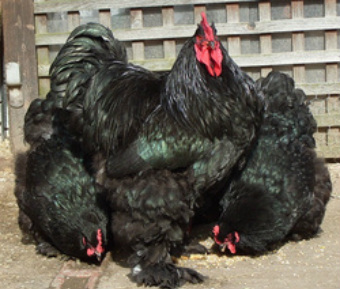
The Black male and female plumage.
Rich black, well glossed, free from golden or reddish feathers.
In both sexes; the beak should be yellow or horn or black is permissible.
The comb face and ear lobes and wattles should be bright red.
Eyes should be bright red,dark red, hazel or nearly black.
Legs should be yellow, dusky yellow or lizard.
Genetically, the black can on any Allele other than 'eWh' wheaten, though tends to be usually 'E' allele which is extended black, all birds will have two copies i.e. E/E to make a very deep black Melatonic (Ml) and 'rb' which is Recessive black. 'Ar+' Autosomal red is added to give the black that deep bottle green sheen, it's abscence will often result in the fowl having a purple duller sheen to it's feathers. So the ideal gene sequence for a very good black cochin would be;
E/E Ml/Ml rb/rb Ar+/Ar+. "Ml", is for melatonic, which gives the black the deepness of black and stops the lightening or browning of the older birds Pantaloon's and fluff. "rb" is for Recessive Black. Speaking in general terms, it's absence in a fowl is shown by feathers with a purple rather than bottle green sheen to them. "rb" assists "Ml" in giving the fowl that deep deep black look. Ar+ is the genetic code for Autosomal Red, which again is used as a black enhancer, to give that bottle green sheen a reel lustre. However it's inclusion in the fowl can often give disappointment, when a very promising looking male growers starts to show red stipples in it's hackles (Both neck and saddle) This problem rarely effects the females, but shows itself in the sex linked areas of the bird, which on the males are larger longer wider and more showy than the females. When black is used in conjunction with "Bl" blue gene, to create blue cochins. "Ar+" can manifest itself as the dreaded sandiness, rust or bronze/copper look in the same sex linked areas, only this sandiness also shows through in the female.
Rich black, well glossed, free from golden or reddish feathers.
In both sexes; the beak should be yellow or horn or black is permissible.
The comb face and ear lobes and wattles should be bright red.
Eyes should be bright red,dark red, hazel or nearly black.
Legs should be yellow, dusky yellow or lizard.
Genetically, the black can on any Allele other than 'eWh' wheaten, though tends to be usually 'E' allele which is extended black, all birds will have two copies i.e. E/E to make a very deep black Melatonic (Ml) and 'rb' which is Recessive black. 'Ar+' Autosomal red is added to give the black that deep bottle green sheen, it's abscence will often result in the fowl having a purple duller sheen to it's feathers. So the ideal gene sequence for a very good black cochin would be;
E/E Ml/Ml rb/rb Ar+/Ar+. "Ml", is for melatonic, which gives the black the deepness of black and stops the lightening or browning of the older birds Pantaloon's and fluff. "rb" is for Recessive Black. Speaking in general terms, it's absence in a fowl is shown by feathers with a purple rather than bottle green sheen to them. "rb" assists "Ml" in giving the fowl that deep deep black look. Ar+ is the genetic code for Autosomal Red, which again is used as a black enhancer, to give that bottle green sheen a reel lustre. However it's inclusion in the fowl can often give disappointment, when a very promising looking male growers starts to show red stipples in it's hackles (Both neck and saddle) This problem rarely effects the females, but shows itself in the sex linked areas of the bird, which on the males are larger longer wider and more showy than the females. When black is used in conjunction with "Bl" blue gene, to create blue cochins. "Ar+" can manifest itself as the dreaded sandiness, rust or bronze/copper look in the same sex linked areas, only this sandiness also shows through in the female.
BLUE COCHIN.Male Plumage. The hackles (both neck and saddle), back and and tail, should be a level shade of rich dark blue free from rust, sandiness or bronze. The remainder should be an even shade of blue. Free from lacing on the breast, thighs or fluff and free from rust, sandiness or bronze.
In both sexes Beak yellow, horn or yellow slightly marked with horn. Comb, face, ear-lobes and wattles bright red. Eyes dark. Legs and feet, blue with yellow tinge in the pads. |
Female Plumage. One even shade of blue free from lacing and from rust, sandiness or bronze.Pigeon blue prefered.
The genetic make up for an ideal Blue Cochin would be like the Black on any allele other than "EWh". And the use of "e+" is difficult and undesirable. Once again "E" is the usual and most used allele unless the blue is part of a pattern fowl such as blue partridge or blue laced.
The blue in Blue Cochins is often called "Self Blue" and there are a number of discussions as to how the best and most consistent blue cochin is best bred. |
PARTRIDGE and GROUSE COCHIN
WHITE COCHIN
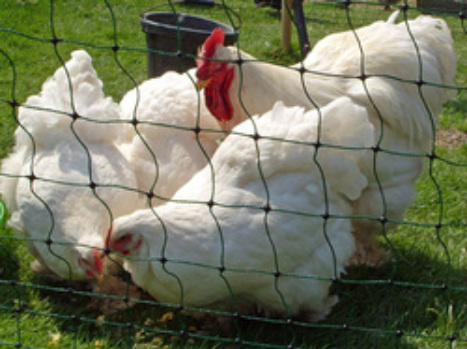
Male and Female Plumage; Pure white. Free from any straw or red shade.
In Both Sexes; Beak, rich bright yellow. Comb, face, ear-lobes and wattles bright red, as in the black cochin. Eyes pearl or bright red. Legs, brilliant yellow.
In Both Sexes; Beak, rich bright yellow. Comb, face, ear-lobes and wattles bright red, as in the black cochin. Eyes pearl or bright red. Legs, brilliant yellow.
